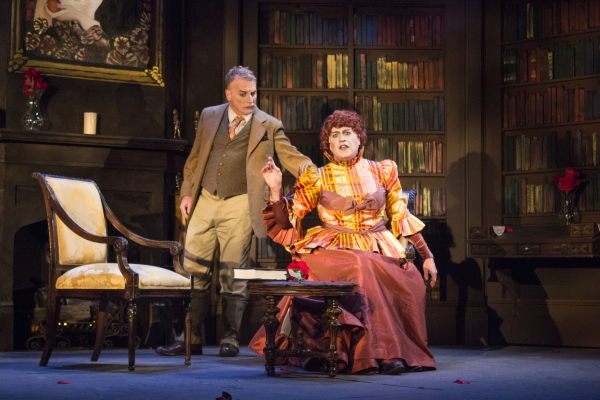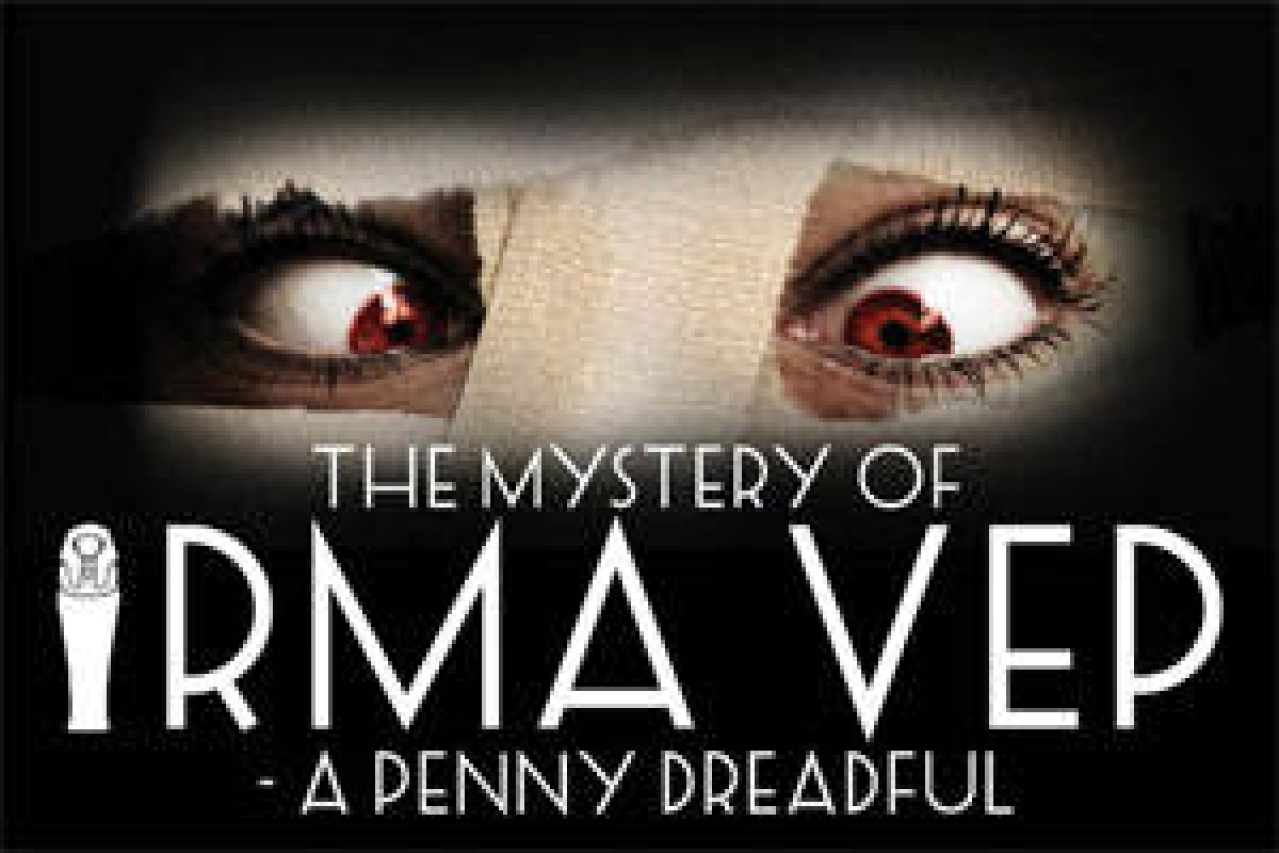The Mystery of Irma Vep

(© Emily Faulkner)
Arguably, the most memorable scene among many in the Berkshire Theatre Group's revival of The Mystery of Irma Vep, Charles Ludlum's delightful spoof of all things Gothic that go bump in the night, occurs when Lady Enid Hillcrest, second wife of Lord Edgar Hillcrest, and Jane Twisden, the housekeeper with a penchant for keeping secrets, perform a duet on twin dulcimers. There they sit, sharing a moment of feminine companionship, two male actors, cross-dressed in high Victorian-era style, as if they have no idea that they will soon be fighting off attacks from ghosts, a werewolf, and other malevolent phantoms roaming the British country landscape. (The play was first performed in 1984 by Ludlum and his offstage partner, Everett Quinton. Part of the show's licensing agreement requires having two actors of the same sex play the parts.)
Trailing impressive credits from Broadway and beyond, Bill Bowers and Tom Hewitt perform four roles apiece, ranging from Lord Hillcrest, an Egyptian mummy come to life as a hootchie-kootchie dancer, and a menacing butler endowed with a stoop that could rival Richard III. Slight of build and fragile-looking, Bowers projects oversize emotions that richochet from condescension to disgust to horror. He opens the play as Jane Twisden, the antagonistic housekeeper, who then morphs into Lord Hillcrest, bounding in from a hunting expedition. The hefty Hewitt is cast as Nicodemus, the butler with a taste for blood (but only when the moon is full) and Lady Enid, pretending a virginal bewilderment.
The actors often show up as body parts as well: An arm extends from a doorway, for example, to give the illusion of a three-person scene. Ludlum mined the script for other sight gags and one-liners, as well as the babbling dialogue of the ancient mummy, which could have been lifted from a fondly remembered Sid Caesar sketch.
To marvel at Bowers and Hewitt's myriad talents in transforming from one character to another is to also acknowledge their dexterity at quick costume changes, reentering in seconds newly dressed, wigged, made-up, and bejeweled. Between breaking the fourth wall to let the audience in on the gimmicks and recognizing the sweat of the costume changes, the actors never let the hilarity falter.
The scene is set in a dark-hued, wood-paneled drawing room, a hard-working box set, stacked with fake walls and multiple entrances, designed by Randall Parsons, and illuminated in flashes of lightning by Alan C. Edwards. Wade Laboissonniere designed the outrageous costumes, which could have served multiple casts for period films like Jane Eyre, Rebecca, and Wuthering Heights. Working in concert with the costume changes is the sound score, which includes music by Our Lady J. and is seemingly orchestrated to alternate with the offstage sounds of ripping Velcro.
With apologies to director Aaron Mark, who kept his foot on the pedal beyond the legal speed limit yet kept his hand on the wheel, steering ever so close to camp, the real show might be happening backstage. I'll bet Berkshire Theatre Group could sell tickets to watch the dresser responsible for turning Hewitt from Nicodemus into Lady Enid and back again, before the script segues to where the burly Hewitt returns bare midriff as the mummy comes to life.











